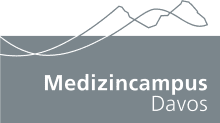Database and biobank
Databases and biobanks provide the perfect foundation for a better understanding of many complex diseases, especially neurodermatitis, in the case of CK-CARE.
The structure and use of the CK-CARE database and biobank differ considerably from other known approaches. The patients are recruited with careful consideration. In addition to blood and skin samples, comprehensive information is collected and compiled. For example, the past course of neurodermatitis is precisely documented and the phenotype with degree of severity, including photo documentation, is recorded. Information is recorded about allergies in patients and their families, as well as all previous and current treatments, reactions to previous treatments and both environmental and epidemiological data (e.g. place of residence, lifestyle, sports, and contact with animals). All age groups, from birth, are taken into account in the recruitment. Various studies (ProRad-Study/CARE Children-Study) help in the recruitment of patients. Inclusion of psychosocial factors is a new consideration with respect to the concept of the impact of the ‘environment’.
For the first time, CK-CARE is in the unique situation of being able to answer many important questions about the complexity of neurodermatitis and the connection with other allergic diseases, thanks to the diversity of the information obtained (more than 1000 data points per patient/visit), and the documentation of the course of the disorder over at least five years, in combination with the blood, skin, and microbiome samples collected. This knowledge is of inestimable scientific value and consequently also has socio-economic implications.
Having initially focused on the establishment and development of the CK-CARE database and biobank, the characterisation of the stored patient data are now gaining in importance as the data have been exceptionally described in terms of phenotype and clinical symptoms, as well as the molecular analysis of the more than 1500 blood and skin samples. The use thereof has already led to the first identification of new sub-groups of neurodermatitis. As a result, patients are increasingly benefiting from a treatment that is individually adapted to their form of the disease in the sense of personalised, more precise medicine.


